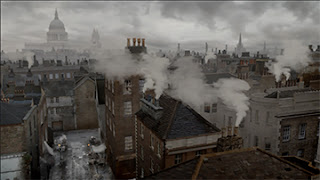About Process in Illustration, With (You Guessed it) Illustrations.
This time out, I’m going to try something a little different. I’m going to describe, to the best of my ability, how I intend to go about producing the cover art for my first self-published book, Before Baker Street – a collection of stories starring Sherlock Holmes as a teenager.
It was great fun writing these, and several of them have been published, here and there. After I finished a couple I began toying with the idea of collecting them into one volume. My wife, Grace, suggested Before Baker Street as the title, because I couldn’t come up with a good one. I doubt I could come up with anything better, so I’m going with it.
Inevitably, given that I’m also an illustrator and have created several covers for books I’ve written, I started thinking about cover art. The time period is the 1880s, so that means a period piece. Looking at the content of the stories, I have Sherlock encountering a few people who are well-known historical or fictional personages, including Tommy Stubbins.
Tom, as many people know, was the young assistant of Dr. John Doolittle, the man who could talk to animals. I have made Tom a cousin of the Holmes boy, who is disparaged by Sherlock’s parents because they believe Doolittle to be a crackpot. Holmes is inclined to believe that as well, until he learns better, in the story The Mystery of Edith Curtsey. Tom shows up again in The Adventure of the Missing Don. I researched the historical settings of the Holmes and Doolittle stories, and concluded that Tom would be a few years older than Sherlock, but quite a bit older than he was depicted in Hugh Lofting’s original books.
There are numerous hints given by both Lofting and A. Conan Doyle about the ages of his characters. The Voyages of Doctor Doolittle is purportedly written by Stubbins at the age of 70. If Dr. Dolittle played the flute in his house in 1839, when Stubbins was nine and a half, he was most likely born in 1830. Therefore he was 70 in 1900. According to canon, Holmes was active circa 1880 – 1914.
An estimate of Holmes's age in the story His Last Bow places his birth in 1854; the story is set in August 1914 and he is described as being 60 years of age. (Some cite Holmes’s birthday as 6 January.) Therefore Stubbins is 24 years older than Sherlock. So, if The Mystery of Edith Curtsey is set in 1865 and takes place when Sherlock is 12, Stubbins must be 36, and in the prime of his life. At the time the story opens, Sherlock hasn’t seen his cousin, who is 24 years older than he, in several years. Mycroft is 7 years older than Sherlock. If Sherlock is 12, therefore Mycroft is 19.
I decided to jigger dates a little, but overall I tried to be as true as possible to both Lofting and Doyle. All this behind-the-scenes research and discovery was of course enormously entertaining for me as a writer. Really, I can’t tell you how much fun I had writing these tales! But that’s neither here nor there right now, because I mean to talk about my concept for the cover art and how it will develop.
Once I began thinking about an illustration, it became clear almost at once that I wanted to do a scene of Victorian London for my wrap-around cover. I went in search of reference and found several good examples. There are plenty to choose from, contemporary stuff as well as illustrations by other artists. A few “spoke” to me, meaning they hit something of a chord in my developing mental picture of what I am after. Figures 1-5 here
None was exactly right, however. I discarded the second and third images pretty quickly because they didn't project the mood I was looking for. I ended up combining the others (fig. 1, fig. 4, and fig. 5) in Photoshop. By so doing, I came up with a composition I liked (fig. 6). Now, obviously I can’t use the images I found, because they are copyrighted -- but I can re-draw them. What I need to do now, therefore, is to trace them off, transfer them to a piece of art board, and redraw everything.
Hold on a minute, though—what’s that parrot doing there?
I’m sure that Dr. Doolittle’s many fans will think they know who that parrot is—but in all likelihood Polynesia couldn’t be still alive. She was, after all, 250 years of age in 1839, and this is decades later. Yet one of her sons or daughters could be, so that’s who we’re dealing with. Stubbins claims the parrot speaks to him, but refuses to talk to strangers.
I always loved Polynesia in the books, so it was a real pleasure to bring a relative of hers to life for a short time. Polynesia’s tail feathers were never explicitly described as red in the books, but African Greys do have such feathers. In fig. 5, I found the little spot of color to be useful in attracting the observe's eye to the front cover design—and those red feathers make for a perfect spot of color in an otherwise drab urban landscape.
So there you have it. Next time I’ll talk more about how I am going about transferring this image and what I intend to do with it as I proceed. I do have a good "antique" type of font chosen for the title, and I'll show an example of that, too.








I liked 4 and 5 the best too. I do most of my own covers but it's not so elaborate.
ReplyDelete